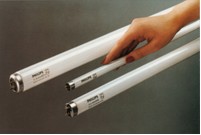Lighting energy saving is a systematic project, and a comprehensive strategy can achieve good results. Since the reform and opening up 30 years ago, China's urban and rural construction and lighting industry has made rapid development and economic strength has been greatly enhanced; at the same time, the contradiction between rapid growth of energy demand and tight energy supply has become increasingly prominent, and lighting energy conservation has gradually received attention from all quarters. However, in the concept of lighting energy conservation, there is still emphasis on improving the efficiency of light sources, neglecting the overall quality and energy efficiency of lighting and lighting systems; paying attention to the energy-saving effect of lighting equipment, and weak research on promotion and application and correct design; Construction, but neglect management and other issues.
In the early 1970s, the oil embargo triggered the energy crisis in the capitalist world. The United States, Britain and other countries had adopted measures to reduce the illumination standard to save lighting power. As a result, work efficiency decreased and road traffic accidents increased. This one-sided lighting energy saving method does not work. CIE has issued seven recommendations for lighting energy conservation, and advocated a comprehensive lighting energy-saving strategy without reducing the quality of lighting. In 1981, I published the article "The Ways and Potentials of Energy Saving in Architectural Lighting" at the first annual conference of the Beijing Lighting Society, expounding this concept and proposing that "lighting energy should start from three aspects of product, design and management". The six effective ways to achieve energy saving in lighting are analyzed in detail. In the past 30 years, the concept and environment of lighting technology and lighting applications at home and abroad have changed a lot, but we can still explore the comprehensive strategy of lighting energy saving in the new era along these ways:
1. Develop and adopt a high-efficiency light source;
2. Develop and adopt high-performance lamps;
Third, the lighting standards are moderate, and the lights are allocated as needed;
4. Lighting forms that meet the requirements for energy conservation;
5. Make full use of natural light;
6. Strengthen the management of lighting energy conservation.
First, the light source
From the perspective of lighting energy saving, it is a general trend to eliminate ordinary incandescent lamps. Many countries have set a timetable for the elimination of incandescent lamps. In September this year, EU countries have begun to stop selling incandescent lamps. In July this year, China’s National Development and Reform Commission signed a cooperation project with the United Nations Development Program (UNDP) and the Global Environment Facility (GEF) on “China’s phasing out of incandescent lamps and accelerating the promotion of energy-saving lampsâ€. But incandescent lamps are warm and gorgeous, and the advantages of easy use and low price are still nostalgic. The ban on the sale of incandescent lamps in the European Union has caused residents to snap up incandescent lamps. European lighting designers have also made different voices about the elimination of incandescent lamps. They believe that "the replacement of incandescent lamps into compact fluorescent lamps will have a negative impact on the visual environment quality, and the savings will be saved. The energy is insignificant compared to the current global warming problem. "The solution to this problem will be to find a better alternative light source. High-efficiency tungsten halogen lamps and LED lamps of good quality may be the future choice.
In terms of indoor lighting, fluorescent lamps are still the protagonists of electric light sources. The 38 mm diameter T12 tube has been gradually replaced by T8 and T5 tubes. The combined luminous efficacy of the T5 tube with a diameter of only 16 mm and the electronic ballast is above 100 lm/W, which is 30% higher than that of the T12 tube. At the same time, it also greatly reduces the materials used to manufacture fluorescent lamps and reduces transportation costs. Comparing the volume of 1000 tubes (excluding the lamp angle), the T12 tube is 1.361 cubic meters (100%), the T8 tube is 0.637 (47%), and the T5 tube is only 0.231 cubic meters (17%).

Figure 1 Comparison of T12, T8, T5 fluorescent tubes
Â
1. Structure Design:
(1) Pure flat structure, ergonomically design, slim & good appearance, streamlines modeling, exquisite work-craft.
(2) Display, touch, PC system integration slim design;47.9mm thickness only.
2. Effect:
(1) Using the newly developed projected capacitive screen, supports 10 point touch, handwriting and multi-point gesture;
(2) Touch speed is less than 3ms, good accuracy, ease of use and easy to maintain;
(3) Anti-light interference, to ensure the accuracy of operation (can be used as usual under bright light);
3. Good scalability: Flexible configuration, can expand the installation of customer demand for a variety of functional accessories;
4. High safety: Aluminum alloy + sheet metal structure, no sharp edges, wear resistant and anti-corrosive paint process, overall explosion-proof design;
5. Stable performance: advanced design ideas, strict production process, stable and reliable product quality, low failure rate;
6. Simple installation: power a key switch, dispense with on-site installation and commissioning.
Industrial Panel Pc,Industrial Touch Pc,Embedded Pc,Touch Panel Computer
Guangzhou TouchWo Electronics Co.,Ltd. , http://www.touchaio.com